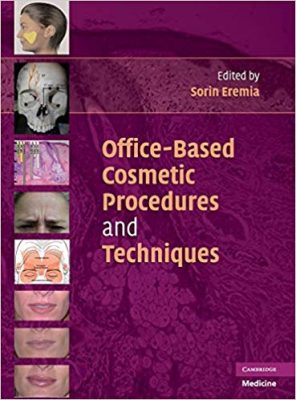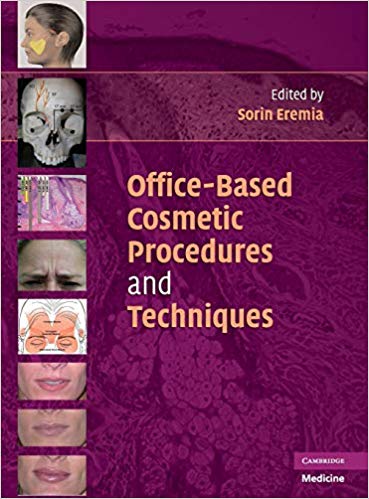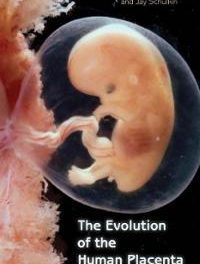 Editor: Sorin Eremia, MD
Editor: Sorin Eremia, MD
Publisher: Cambridge University Press – 367 pages
Book Review by: Sonu Chandiram
Americans spent some $16.5 billion in 2018 on cosmetic plastic surgery and minimally-invasive procedures, according to an April 2019 report of an industry group – the American Society of Plastic Surgeons. This was a four percent increase over 2017 figures. Other statistics are provided in the accompanying chart.
Of the total, $8.8 billion was spent on minimally-invasive procedures, and $7.7 billion was spent on cosmetic plastic surgery procedures. A large part of the $7.7 billion spending, or nearly 28 percent of it, was for procedures on the breast, amounting to some $2.15 billion. These were for breast augmentation (enlargement), breast lift, breast reduction, breast reduction in men, and breast implant removals (see chart).
This book is extensive in scope, with the wide range of cosmetic (and some reconstructive) surgical procedures covered in it. And, it is also intensive in treatment, with the numerous ways the practitioners in this field can help their patients look better: not only younger as millions of people desire, but also more beautiful, and even brighter.
Eighty-five specialists in cosmetic surgery, dermatology, facial plastic surgery, otolaryngology, and reconstructive surgery authored the 76 chapters of this book organized around 21sections and five Parts. They are from all over the United States (most from California) and nine other countries – Belgium, Canada, Chile, China, France, Italy, Japan, Mexico, and Romania.
We name below the titles of chapters within the sections, and the sections within the Parts:
- PART I – Anatomy of the Aging Process
- Chapter 1 – Anatomy and the Aging Changes of the Face and Neck
- PART II – Anesthesia and Sedation for office Cosmetic Procedures
- Chapter 2 – Local Anesthetics
- Chapter 3 – The Concept of Tumescent Anesthesia
- Chapter 4 – Nerve Blocks
- Chapter 5 – Topical Anesthesia
- PART III – Fillers and Neurotoxins
- Section 1 – Introduction
- Chapter 6 – Fillers – Past, Present, and Future
- Chapter 7 – Hyaluronic Acid Fillers : How Structure Affects function
- Section 2 – Restylane, Juvederm, and Puragen Families of Nonanimal Stabilized Hyaluronic Acid Fillers
- Chapter 8 – Restylane General Concepts
- Chapter 9 – The Restylane Family of Fillers: Canadian Experience
- Chapter 10 – The Juvederm Family of Fillers
- Chapter 11 – Puragen: A New Dermal Filler
- Chapter 12 – Puragen: The Asian Experience
- Section 3 – Collagen Fillers
- Chapter 13 – Review of Collagen Fillers
- Chapter 14 – Human and Bovine Collagen-Based Fillers
- Chapter 15 – Porcine Collagen: Evolence
- Section 4 – Calcium Hydroxylapatite (Radiesse)
- Chapter 16 – Calcium Hydroxylapatite (Radiesse): A Facial Plastic Surgeon’s Approach
- Chapter 17 – Calcium Hydroxylapatite (Radiesse): A Dermasurgeon’s Approach
- Chapter 18 – Calcium Hydroxylapatite for Hand Volume Restoration
- Section 5 – Long-Lasting Fillers
- Chapter 19 – Long-Lasting Fillers: How Structure Affects Function
- Chapter 20 – Acrylic Particle-Based Fillers: Artefill
- Chapter 21 – Poly-L-Lactic Acid Fillers
- Chapter 22 – Poly-L-Lactic Acid (Sculptra) For Hand Volume Restoration
- Chapter 23 – BioAlkamide
- Chapter 24 – Silicone
- Section 6 – Autologous Fat Transfer
- Chapter 25 – Autologous fat Transfer: An Introduction
- Chapter 26 – Small-Volume Fat Transfer
- Chapter 27 – Larger-Volume Fat Transfer
- Chapter 28 – Fami technique and Fat Transfer for Hand rejuvenation
- Chapter 29 – Adding Volume to the Aging Face: Fat-Grafting Versus Fillers and Implants in Europe
- Section 7 – Choosing a Filler
- Chapter 30 – Fillers: How We Do It
- Chapter 31 – Choosing a Filler
- Chapter 32 – Filler Complications
- Section 8 – Neurotoxins
- Chapter 33 – Neurotoxins: Past, Present, and Future
- Chapter 34 – Botox: How We Do It
- Chapter 35 – Cosmetic Botox – How We Do it
- Chapter 36 – Botox: Beyond the Basics
- Chapter 37 – Botox for Hyperhydrosis
- Chapter 38 – Dysport
- Chapter 39 – Neurotoxin Alternative; Radio Frequency Corrougator Denervation
- Section 9 – Fillers and Neurotoxins in Asia and South America
- Chapter 40 – Fillers and Neurotoxins in Asia
- Chapter 41 – Fillers and Neurotoxins in South America
- PART IV – Cosmetic Applications of Light, Radiofrequency, Ultrasound Energy
- Section 1 – Vascular Applications: Lasers and Broadband Light Devices
- Chapter 42 – Treatment of Telengiectasia, Poikiloderma, and Face and Leg Veins
- Chapter 43 – Vascular Lasers
- Section 2 – Fully Ablative Tissue (CO2, ER:YAG, Plasma)
- Chapter 44 – Overview of CO2 and ER:YAG Lasers and Plasma Devices
- Chapter 45 – Contemporary Laser CO2 Laser Resurfacing
- Chapter 46 – ER: YAG
- Chapter 47 –Plasma Skin Rejuvenation
- Section 3 – Nonablative Laser Tissue Remodeling
- Chapter 48 – Nonablative Laser Tissue Remodeling
- Section 4 – Broadband Light Devices
- Overview of Broadband Light Devices
- Chapter 50 – Titan – Inducing Dermal Contraction
- Chapter 51 – Sciton Broadband Light and ER:YAG Micropeel Combination
- Chapter 52 – Aminolevulinic Acid Photodynamic Therapy for Facial Rejuvenation/Acne
- Section 5 – Radiofrequency
- Chapter 53 – Thermage for Face and Body
- Chapter 54 – Lumenis Aluma Skin Tightening System
- Chapter 55 – Ellman Radiofrequency Device for Skin Tightening
- Chapter 56 – Alma Accent Dual Radiofrequency Device for Tissue Contouring
- Chapter 57 – Combined Light and Bipolar Radiofrequency
- Section 6 – Fractional Lasers
- Chapter 58 – Fractional Lasers – General Concepts
- Chapter 59 – Palomar Lux 1,540-NM Fractional Laser
- Chapter 60 – Fraxel 1,550-NM Laser (Fraxel Restore)
- Chapter 61 – 1,440-NM Fractional Laser Cynosure Affirm
- Chapter 62 – Sciton ER:YAG 2,940-NM Fractional Laser
- Chapter 63 – Alma Pixel ER;YAG Fractional Laser
- Chapter 64 – Fractionated CO2 Laser
- Section 7 – Other Photorejuvenation Devices
- Chapter 65 – LED Photorejuvenation Devices
- Chapter 66- Photopneumatic Therapy
- Section 8 – Hair Removal and Acne: Laser and Light Treatments
- Chapter 67 – Hair Removal laser and Broadband Light Devices
- Chapter 68 – Acne and Acne Scars: Laser and Light Treatments
- Section 9 – Fat and Cellulite Reduction
- Chapter 69 – Fat and Cellulite Reduction: General Principles
- Section 10 – Ultrasonoic Fat Reduction Devices
- Chapter 70 – Ultrashaped Focused Ultrasound Fat Reduction Device
- Chapter 71 – Liposonic Ultrasound Device for Body Sculpting
- PART V – Other Procedures
- Section 1 – Suture Suspension Lifts
- Chapter 72 – Suture Suspension Lifts: An Overview
- Chapter 73 – Silhouette Sutures
- Section 2 – Peels and Microdermabrasions
- Chapter 74 – Chemical Peels and Microdermabrasion
- Chapter 75 – Peeling Techniques from Europe
- Section 3 – Mesotherapy: Injection Lipolysis
- Chapter 76 – Mesotherapy: Injection Lipolysis
In reviewing this book, I discovered many types of procedures that I did not know existed, to enhance the looks of people. I knew about Botox, chemical peels, collagen, dermabrasions, fat transfers, fillers (e.g. hyaluronic acid fillers) and neurotoxins.
But I was certainly unaware totally, of things like broadband light devices, the Fami technique, injection lipolysis, mesotherapy, nonablative laser tissue remodeling, photo rejuvenation techniques, photopneumatic therapy, suture suspension lifts, ultrasonic fat reduction devices, and vascular lasers.
It is not just knowing that such methods and techniques to help people look better exist, but also studying them that makes this book a very valuable one to have.
Much effort has been undertaken by the editor Dr. Sorin Eremia, who collected and expertly organized the contributions of so many experts in countries in Asia, Central America, Europe, North America, and South America. This must also have been a massive undertaking. But it is the collective effort of so many contributors who authored the chapters of this book that makes it a highly important resource, and congratulations are in order to all of them. .
Editor:
Sorin Eremia, MD is Associate Clinical Professor of Medicine and Director of the Cosmetic Surgery Unit in the Division of Dermatology at the University of California in Los Angeles.







